16 Notable Facts About Harpy Eagles
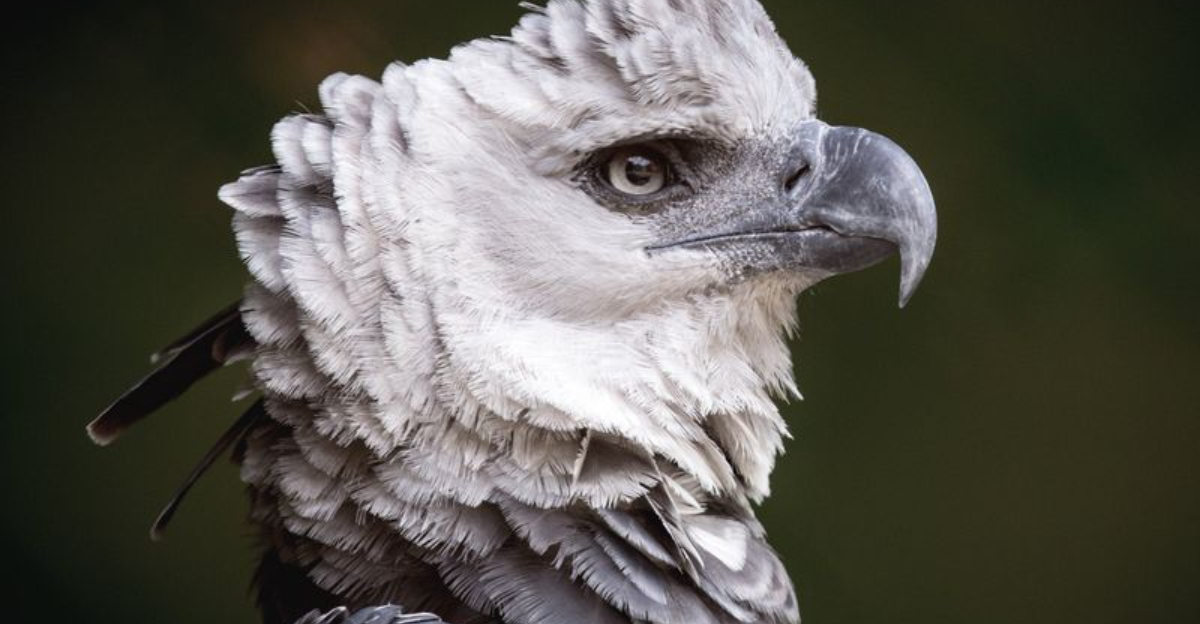
Deep in the rainforests of Central and South America lives one of nature’s most impressive aerial hunters. The harpy eagle, with its massive talons and wingspan, commands respect throughout its domain.
These magnificent birds of prey showcase incredible adaptations that have fascinated scientists and bird enthusiasts for generations.
1. Heavyweight Champions
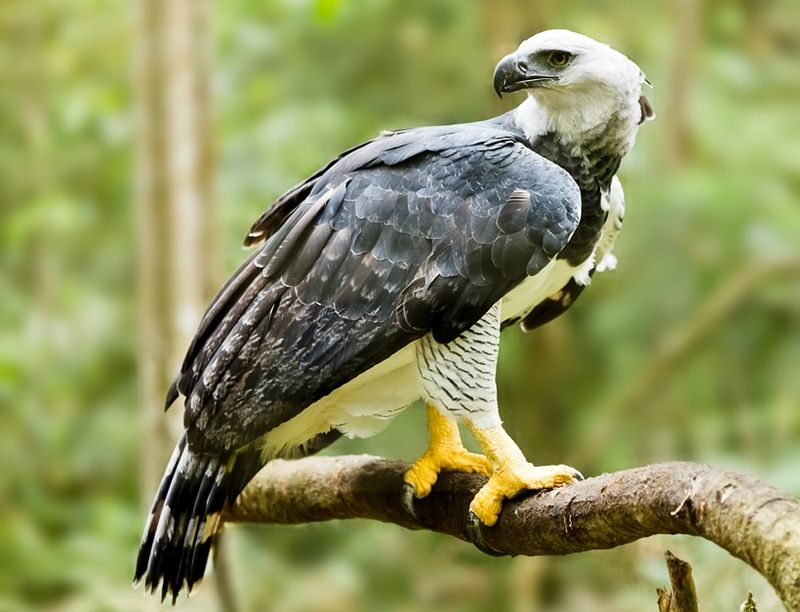
Tipping the scales at up to 20 pounds, these feathered giants rank among the heaviest eagles on Earth. Females outweigh males by nearly double, creating one of the most dramatic size differences among raptors.
Their robust build supports powerful hunting muscles needed for snatching monkeys from treetops.
2. Talon Terrors

Imagine claws the size of a grizzly bear’s – that’s what harpy eagles pack! Their rear talons stretch to 5 inches long, larger than many kitchen knives. These formidable weapons can exert crushing pressure of 530 pounds per square inch, easily piercing through the skulls of sloths and monkeys.
3. Distinctive Crown
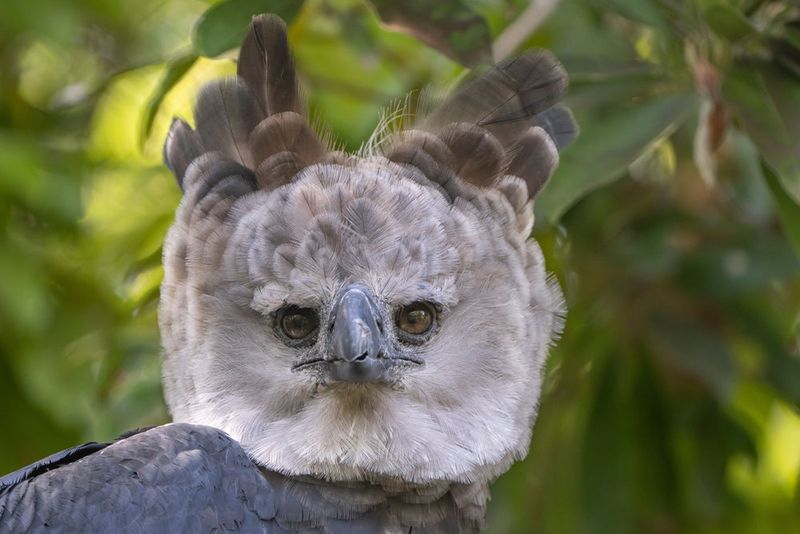
When agitated, these raptors fan their head feathers into a magnificent crown-like display. This dramatic headdress serves dual purposes – intimidating rivals and enhancing their already acute hearing.
The dark gray plumage contrasts sharply with their bright white underparts, creating nature’s perfect camouflage against the dappled forest canopy.
4. Monkey Hunters
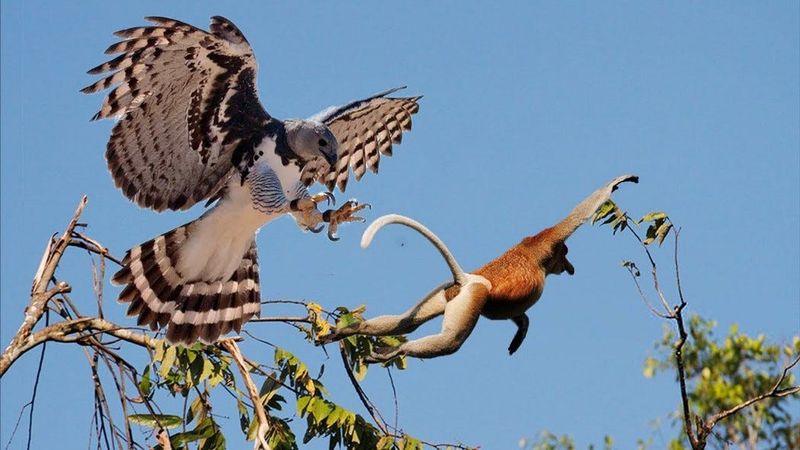
Forget mice and rabbits – these apex predators target prey weighing up to 17 pounds! Monkeys, sloths, and large birds don’t stand a chance against their silent attack strategy. They’ll wait motionless for hours before ambushing with a burst of speed reaching 50 mph through dense forest canopy.
5. Forest Homebodies
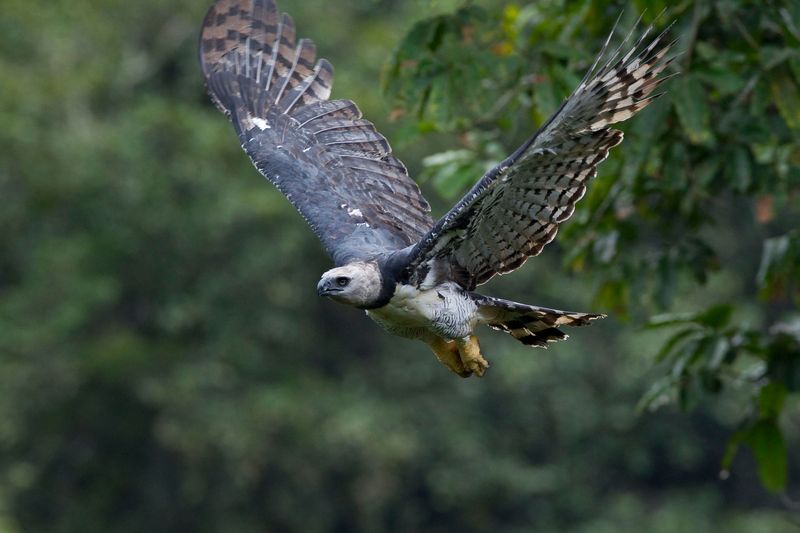
Unlike many birds that migrate seasonally, harpy eagles stay put. A mated pair needs roughly 25 square miles of undisturbed rainforest to thrive.
They’re incredibly loyal to their territory, sometimes defending the same patch of jungle for decades. This homebody nature makes deforestation particularly devastating to their populations.
6. Rainforest Architects
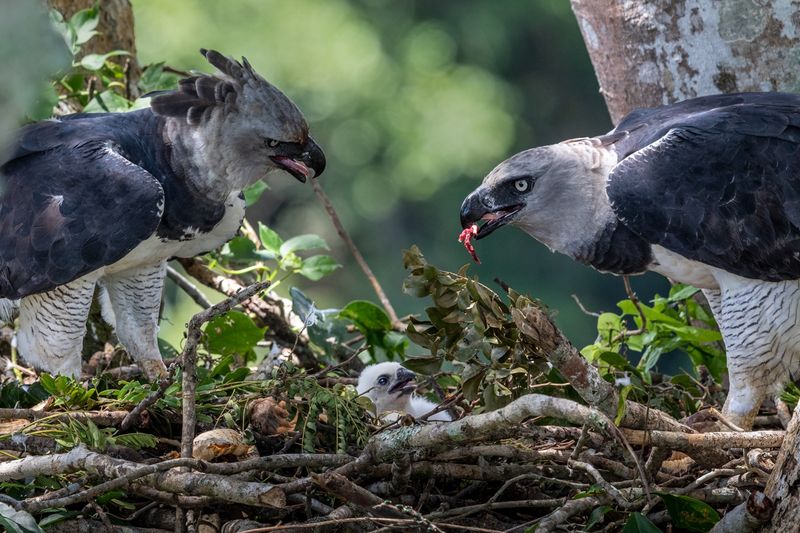
Master builders of the sky, these eagles construct massive nests measuring up to 6 feet wide – big enough for a human to lie in! Using branches thicker than a human arm, they create structures that can withstand tropical storms for decades. A single nest might contain over a ton of carefully arranged materials.
7. Ancient Mythology Connection
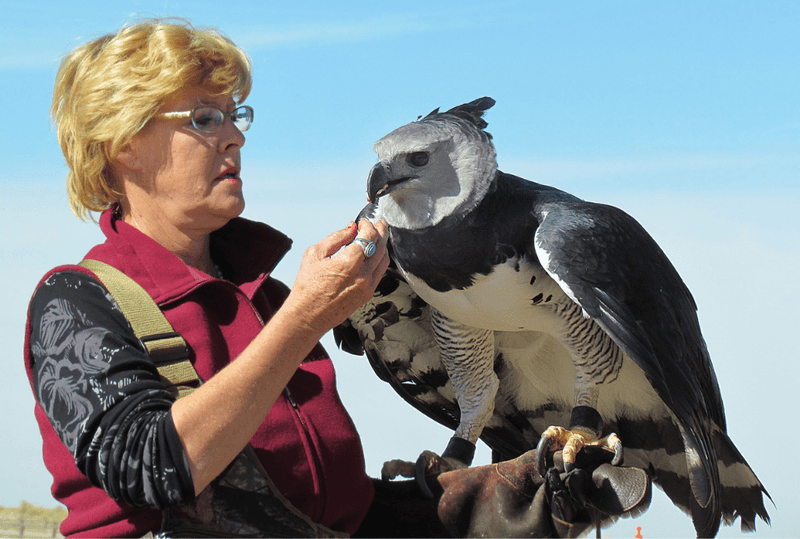
Greek mythology fans might recognize these birds’ namesake – the harpies, wind spirits with women’s faces and birds’ bodies who snatched people away.
Native Amazonian tribes hold similar beliefs, considering harpy eagles sacred messengers between worlds. Some cultures believe their feathers carry spiritual power for protection.
8. Devoted Parents
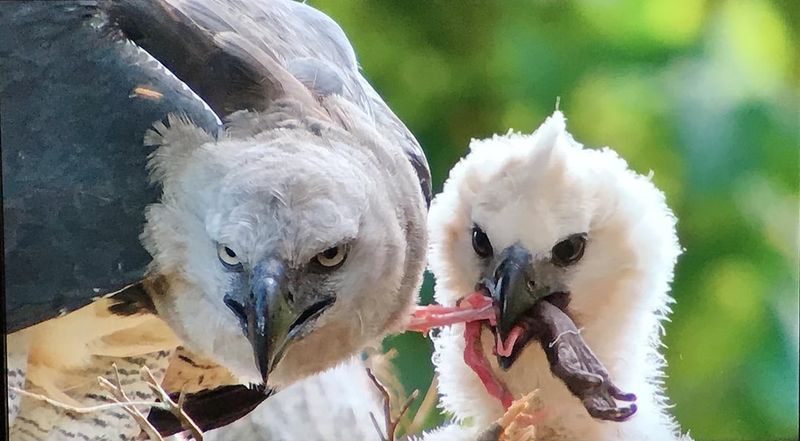
Talk about commitment – harpy eagle couples typically mate for life! They invest nearly three years raising a single chick. First comes the 56-day incubation period, followed by 6-10 months of nestling care. Even after fledging, young eagles receive parental support for another 10 months before independence.
9. Razor-Sharp Vision
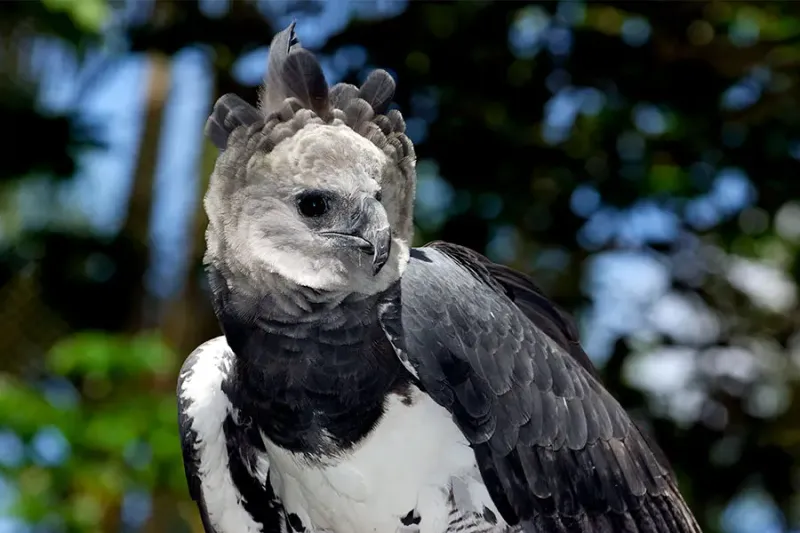
Spotting a sloth through dense foliage is no problem with vision eight times sharper than human eyesight! Their eyes contain five times more light-sensing cells than ours. This exceptional visual acuity lets them detect tiny movements from over a mile away. Plus, they can see ultraviolet light invisible to humans.
10. Slow Reproduction Rate
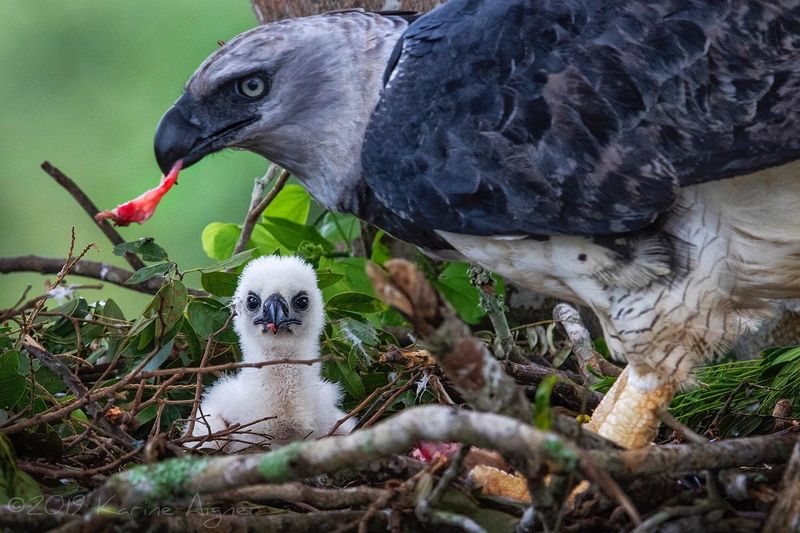
Conservation efforts face challenges because harpy eagles reproduce at glacial pace. Females typically lay just one egg every 2-3 years.
If that precious egg breaks or the chick doesn’t survive, the parents must start the whole lengthy process again. This slow reproduction makes population recovery extremely difficult after habitat loss.
11. Silent Flight Masters
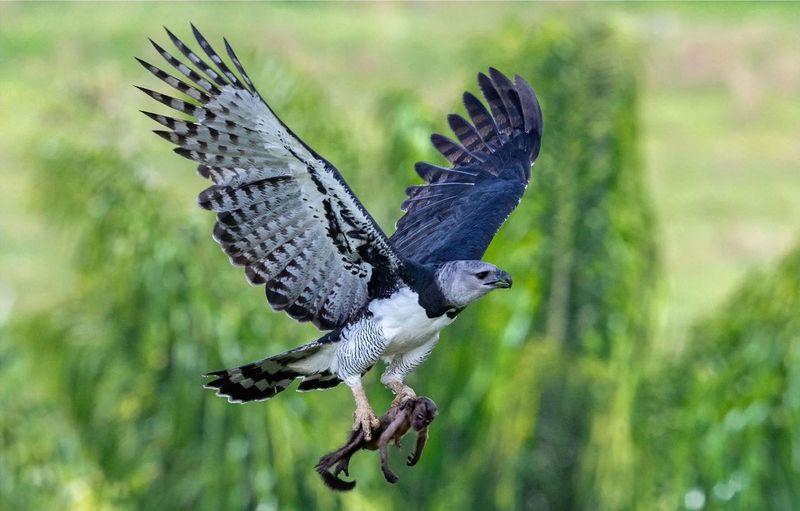
Despite their massive size, these predators glide through forests quieter than a whisper! Special feather adaptations – including comb-like leading edges – break up air turbulence.
Their broad wings evolved specifically for maneuvering between trees rather than soaring. This stealth technology lets them ambush prey that never hears them coming.
12. Prehistoric Appearance
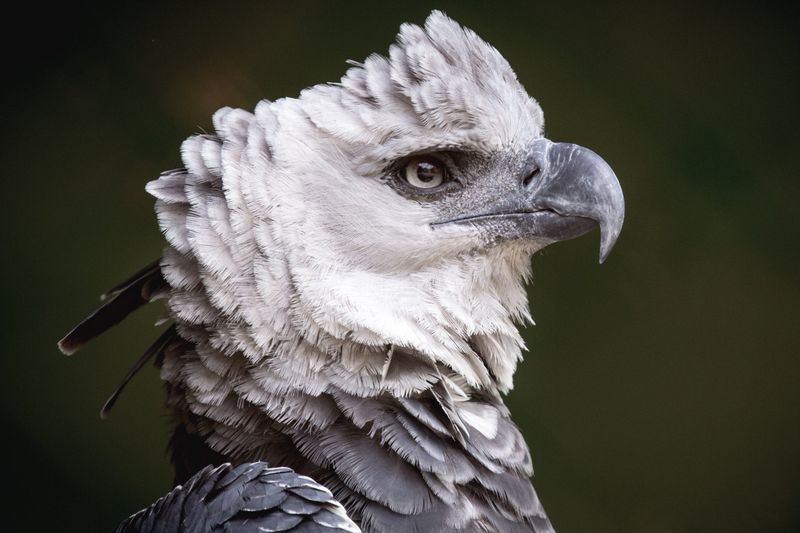
First-time observers often describe feeling like they’ve encountered a living dinosaur! Their ancient lineage dates back millions of years, with fossil records showing remarkably little evolutionary change.
The imposing size, prehistoric-looking talons, and piercing stare create an almost primordial impression that connects viewers to Earth’s distant past.
13. Facial Disc Function
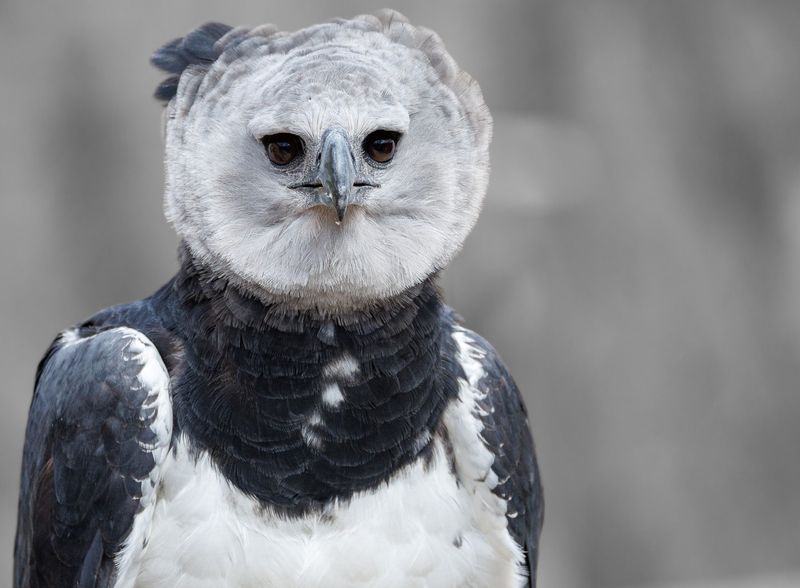
Look closely at a harpy’s face to spot the disc-shaped arrangement of feathers that works like a satellite dish for sound!
These specialized feathers channel forest noises directly to their ear openings. The facial disc can be adjusted to pinpoint sounds with remarkable precision, helping locate prey hidden under dense canopy cover.
14. Cultural Icon Status
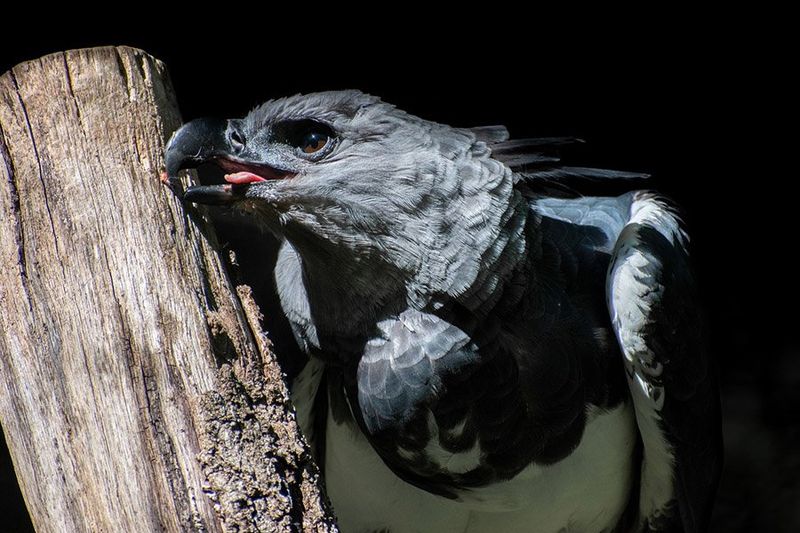
Panama proudly claims the harpy eagle as its national bird, featuring it prominently on coins and stamps. Brazilian air force pilots wear harpy eagle patches on their uniforms as symbols of aerial power.
Throughout Latin America, the bird represents strength in conservation campaigns, with its image rallying support for rainforest protection efforts.
15. Disappearing Giants

Sadly, these magnificent birds have vanished from nearly 40% of their historic range. Fewer than 50,000 remain worldwide, with numbers rapidly declining.
Deforestation claims approximately 50,000 square miles of rainforest annually – equivalent to 36 football fields every minute – directly destroying crucial harpy eagle habitat and fragmenting what remains.
16. Surprising Adaptability
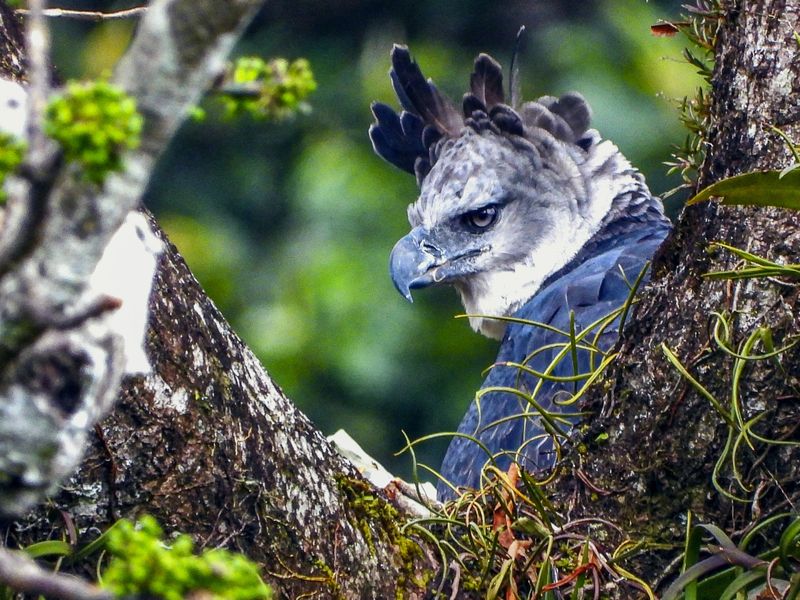
Against all odds, researchers recently discovered harpy eagles adapting to partially logged forests! By adjusting hunting techniques and prey selection, some pairs manage to survive in moderately disturbed habitats.
Conservation programs now work with sustainable forestry operations to maintain tall emergent trees essential for nesting while allowing limited timber harvest.






